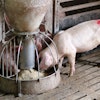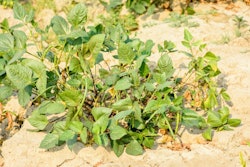
Farmers in the Carolinas are bracing for Hurricane Florence and trying to prepare their farms as much as possible before the Category 2 storm hits.
Corn, soybeans, cotton, sweet potatoes, tobacco and peanuts are among the crops grown in the storm’s projected path, and farmers are working to harvest what they can as fast as they can. While much of the corn crop is mature are ready for harvest, soybeans won’t be ready to harvest for about another month.
The U.S. Department of Agriculture (USDA) said in its September 9 crop progress report that 43 percent of North Carolina’s corn had been harvested.
Livestock, poultry at risk
North Carolina is the U.S.’s top turkey producer, the No. 3 broiler producer and is home to more hogs than any state besides Iowa. North Carolina’s farm bureau says two-thirds of the state’s farm income comes from poultry and livestock.
According to a Bloomberg report, “livestock and poultry producers are working to get feed on-site, move animals away from flood-prone areas and lower waste levels in outdoor lagoons.”
Smithfield Foods, the country’s largest pork processor, plans to shut down two of its plants in North Carolina, including the world’s biggest slaughterhouse, according to a report. The facility, in Tar Heel, can slaughter 35,000 hogs per day and employs 4,000 people, the company said. Pig farmers are also working to lower the levels of liquid manure in outdoor storage in an effort to avoid waterway contamination during and after the storm.
Hotline activated to assist farmers
The North Carolina Department of Agriculture and Consumer Services has activated its hotline to connect farmers with resources that can assist with agricultural emergencies. The toll-free number is +1.866.645.9403. The hotline operates 7 a.m. to 7 p.m. Farmers can also find recovery resources on the department’s disaster website.

















